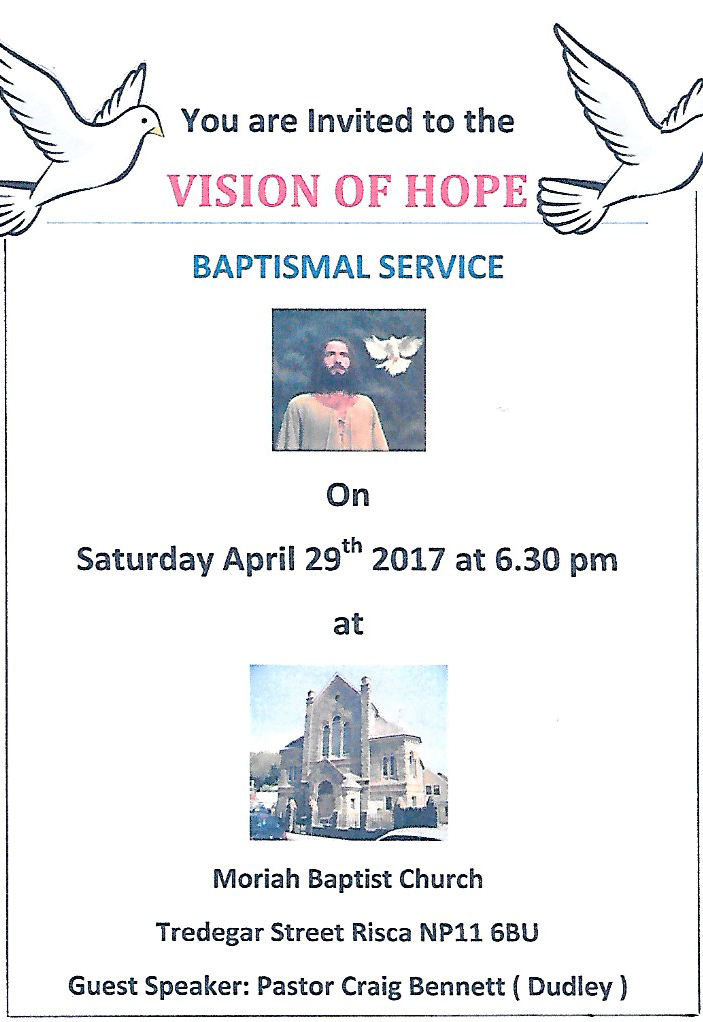Our culture is convinced that all truth claims are personal and subjective, elevating tolerance as the apex value of our day. Anything you do that doesn’t hurt me is now acceptable morality. Obviously, we cannot find truth in a society that doesn’t believe truth exists. (Denison)
Archive for April, 2017
Marriage Pit stop
I always encourage couples who are getting married to make a commitment to take a regular, in-depth look at their relationship. This doesn’t replace the ordinary, everyday talks – or even rows! They are times – perhaps three or four a year – to set aside an evening or weekend simply to talk about us. It’s an opportunity to discuss, listen, and give each other the right to raise any issue. When couples manage to have these ‘pit stops’ regularly, they usually find it’s easier to raise issues without either party feeling threatened.
Those pit stops may hold some surprises. They may show that a fantastic father or mother needs to be a good husband or wife as well. They may reveal that one of the partners is beginning to feel ’part of the furniture’. And a couple may realize that unless they put an end to those sarcastic comments, the hurt caused will result in them drifting further and further apart.
Rob Parsons(Excerpt) Care for family
Restoring Life
Devon based charity Restore are working with trafficked women to give them long term support. Survivors of trafficking currently receive 45 days of government-funded support. Restore says ” survivors are still coming to terms with what has happened to them and in many cases have not even begun to heal”
When the women are referred to Restore, they are given a safe place to recover for an extra year. With the mission statement “rebuilding the life intended for survivors of human trafficking”
(Stewardship)
Truth is more important than respect
A Somali lady in Kenya became a believer after speaking to Christian friends. Although fearful of being rejected by her community, she received a dream from the Lord in which He told her that the truth was more important than the respect of her community.
After her conversion she had to leave home for her own safety.
So what is the evidence for the resurrection?
First, no-one disputed the fact that Jesus died on the cross. He was seen to breathe his last by eye-witnesses, and was certified dead by Roman soldiers whose very business was killing. They decided not to break Jesus’ legs (customary practice to hasten death in crucifixion), because they were convinced he was dead already; and this was confirmed by the observation of ‘blood and water’ (separated cells and serum) coming from his pierced side. This only occurs as a post-mortem event.
The so-called ‘swoon’ theory, that Jesus may have only fainted and revived in the cool of the tomb, does not hold water. It involves believing that a man beaten to within an inch of his life, impaled on a cross and then wrapped in 75 pounds of bandages and spices (rather like a plaster of Paris cast!) could somehow unwrap himself, push away a one ton boulder, single-handedly overcome an armed Roman guard; and then persuade over 500 others that he had conquered death. The foolishness of this position is evidenced by the fact that no-one dared suggest the possibility until centuries later. Would Christ, the model of integrity, really deceive his followers by claiming he had risen when he knew he hadn’t? Apart from the testimony of eye-witnesses, no non-Christian historian at the time (see Josephus, Pliny, Tacitus and Lucian) doubted that Jesus died.
Second, the body was gone. If the Jews had removed it (Mary’s immediate assumption) then they would simply have reproduced it at the first rumour of resurrection. If the disciples had removed it, they would not have subsequently been prepared to die for what they knew had not happened. In any case, the tomb was heavily guarded, and they had all run for their lives when Jesus was arrested. Pilgrims never flocked to Jesus’ tomb. It was empty.
Third, the post-resurrection appearances were impressive. Despite Jesus’ repeated predictions that he would rise from the dead, all his followers first thought of other explanations for the missing corpse. What convinced them? Mary, the twelve disciples, the followers on the Emmaus Road, Paul and 500 others (1 Cor 15:6) became convinced when they saw him. Some have suggested hallucinations as an alternative explanation; but hallucinations do not occur with varied groups, on multiple occasions, in different places, over a period of several weeks. They don’t light beach fires or eat fish either!
Fourth, one has to account for the rapid spread of Christianity after Christ’s death. Most of the twelve disciples later died for their belief that Jesus was God. Although dying for a belief does not make it true, the point is this: they came to believe in Christ’s divinity after being convinced that he really had risen from the dead. It was this conviction that transformed them from fearful cowards into the bold apostles who literally turned the world upside down. The survival and growth of the early church resulted from the unshakeable belief that Jesus was alive.
Fifth is the personal experience of Christians, generations of people who have come to know Jesus as a person, with whom they enjoy a genuine friendship. Christianity is not just a creed to be followed nor an ideology to be embraced; it is a dynamic relationship with a real living God – through Jesus Christ.
People who are unconvinced by the above usually have philosophical objections to miracles per se. Here, no amount of sound historical evidence will convince them. But in reality, the real miracle is the incarnation. Once we allow for the possibility that God exists and could become a man; then a resurrection presents no difficulty at all. It is then a case of reviewing the evidence.
Ultimately, the fundamental block to belief in the resurrection is often not intellectual, but moral. In Jesus’ own words, ‘If they do not listen to Moses and the Prophets, they will not be convinced even if someone rises from the dead.’ (Luke 16:31) For those who choose not to believe, no amount of evidence will suffice.
How confident can we be that Jesus Christ actually lived?
How confident can we be that Jesus Christ actually lived?
The historical evidence for Jesus of Nazareth is both long-established and widespread. Within a few decades of his supposed lifetime, he is mentioned by Jewish and Roman historians, as well as by dozens of Christian writings. Compare that with, for example, King Arthur, who supposedly lived around AD500. The major historical source for events of that time does not even mention Arthur, and he is first referred to 300 or 400 years after he is supposed to have lived. The evidence for Jesus is not limited to later folklore, as are accounts of Arthur.
What do Christian writings tell us?
The value of this evidence is that it is both early and detailed. The first Christian writings to talk about Jesus are the epistles of St Paul, and scholars agree that the earliest of these letters were written within 25 years of Jesus’s death at the very latest, while the detailed biographical accounts of Jesus in the New Testament gospels date from around 40 years after he died. These all appeared within the lifetimes of numerous eyewitnesses, and provide descriptions that comport with the culture and geography of first-century Palestine. It is also difficult to imagine why Christian writers would invent such a thoroughly Jewish saviour figure in a time and place – under the aegis of the Roman empire – where there was strong suspicion of Judaism.
What did non-Christian authors say about Jesus?
As far as we know, the first author outside the church to mention Jesus is the Jewish historian Flavius Josephus, who wrote a history of Judaism around AD93. He has two references to Jesus. One of these is controversial because it is thought to be corrupted by Christian scribes (probably turning Josephus’s negative account into a more positive one), but the other is not suspicious – a reference to James, the brother of “Jesus, the so-called Christ”.
About 20 years after Josephus we have the Roman politicians Pliny and Tacitus, who held some of the highest offices of state at the beginning of the second century AD. From Tacitus we learn that Jesus was executed while Pontius Pilate was the Roman prefect in charge of Judaea (AD26-36) and Tiberius was emperor (AD14-37) – reports that fit with the timeframe of the gospels. Pliny contributes the information that, where he was governor in northern Turkey, Christians worshipped Christ as a god. Neither of them liked Christians – Pliny writes of their “pig-headed obstinacy” and Tacitus calls their religion a destructive superstition.
Strikingly, there was never any debate in the ancient world about whether Jesus of Nazareth was a historical figure. In the earliest literature of the Jewish Rabbis, Jesus was denounced as the illegitimate child of Mary and a sorcerer. Among pagans, the satirist Lucian and philosopher Celsus dismissed Jesus as a scoundrel, but we know of no one in the ancient world who questioned whether Jesus lived.
The Last Week
On Palm Sunday, Jesus rode a donkey into Jerusalem in direct fulfilment of messianic prophecy (Zechariah 9:9), knowing the authorities would respond by seeking his arrest and execution.
On Monday, he overturned the money changers’ tables, further provoking the wrath of his enemies.
On Tuesday, he defeated them again and again in public debate.
On Maundy Thursday, he waited in the Garden of Gethsemane as they came to arrest him
On Good Friday, the One whose power calmed raging seas and raised the dead allowed Roman soldiers to nail him to a cross.
On Sunday ,The tomb where he was laid was empty.
Bible reading: Matt 28 v2-7
Suddenly there was a great earthquake! For an angel of the Lord came down from heaven, rolled aside the stone, and sat on it.
His face shone like lightning, and his clothing was as white as snow.
The guards shook with fear when they saw him, and they fell into a dead faint.
Then the angel spoke to the women. “Don’t be afraid!” he said. “I know you are looking for Jesus, who was crucified. He isn’t here! He is risen from the dead, just as he said would happen. Come, see where his body was lying.
And now, go quickly and tell his disciples that he has risen from the dead, and he is going ahead of you to Galilee.
You will see him there. Remember what I have told you.”

